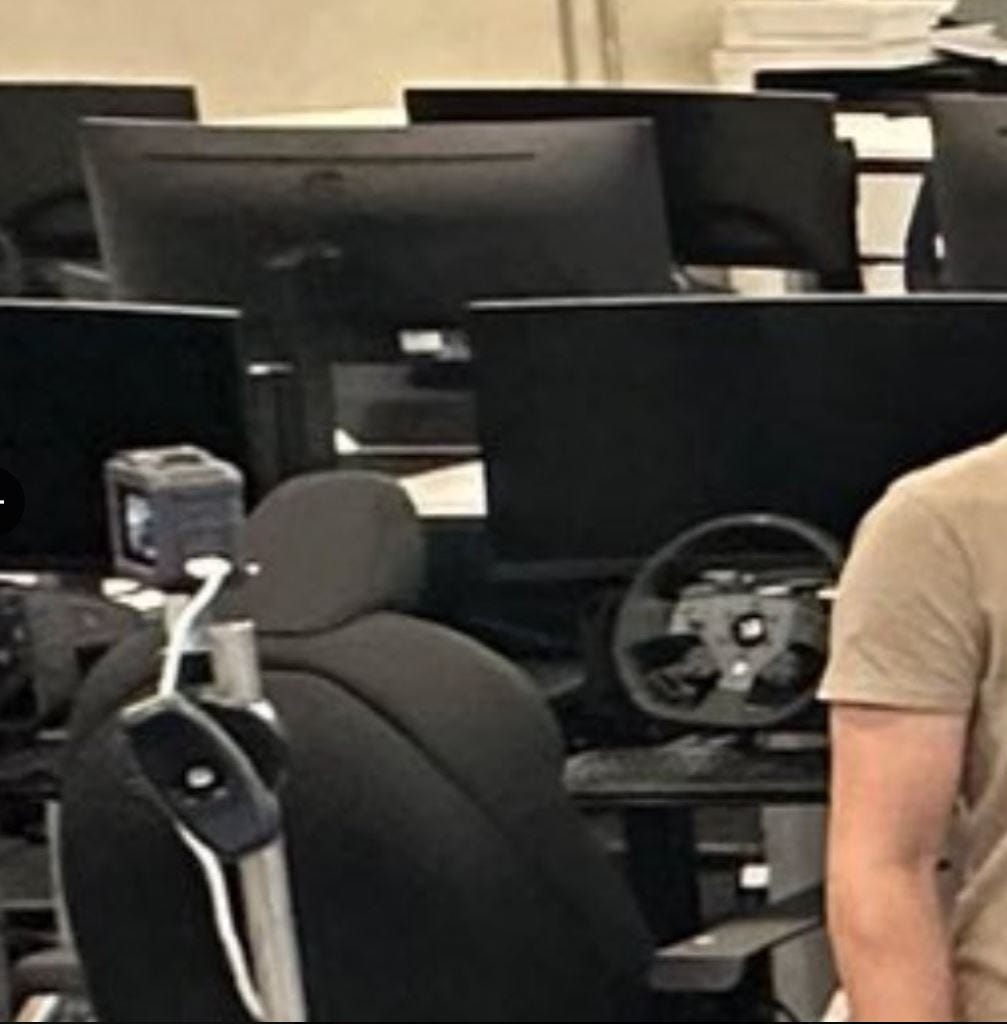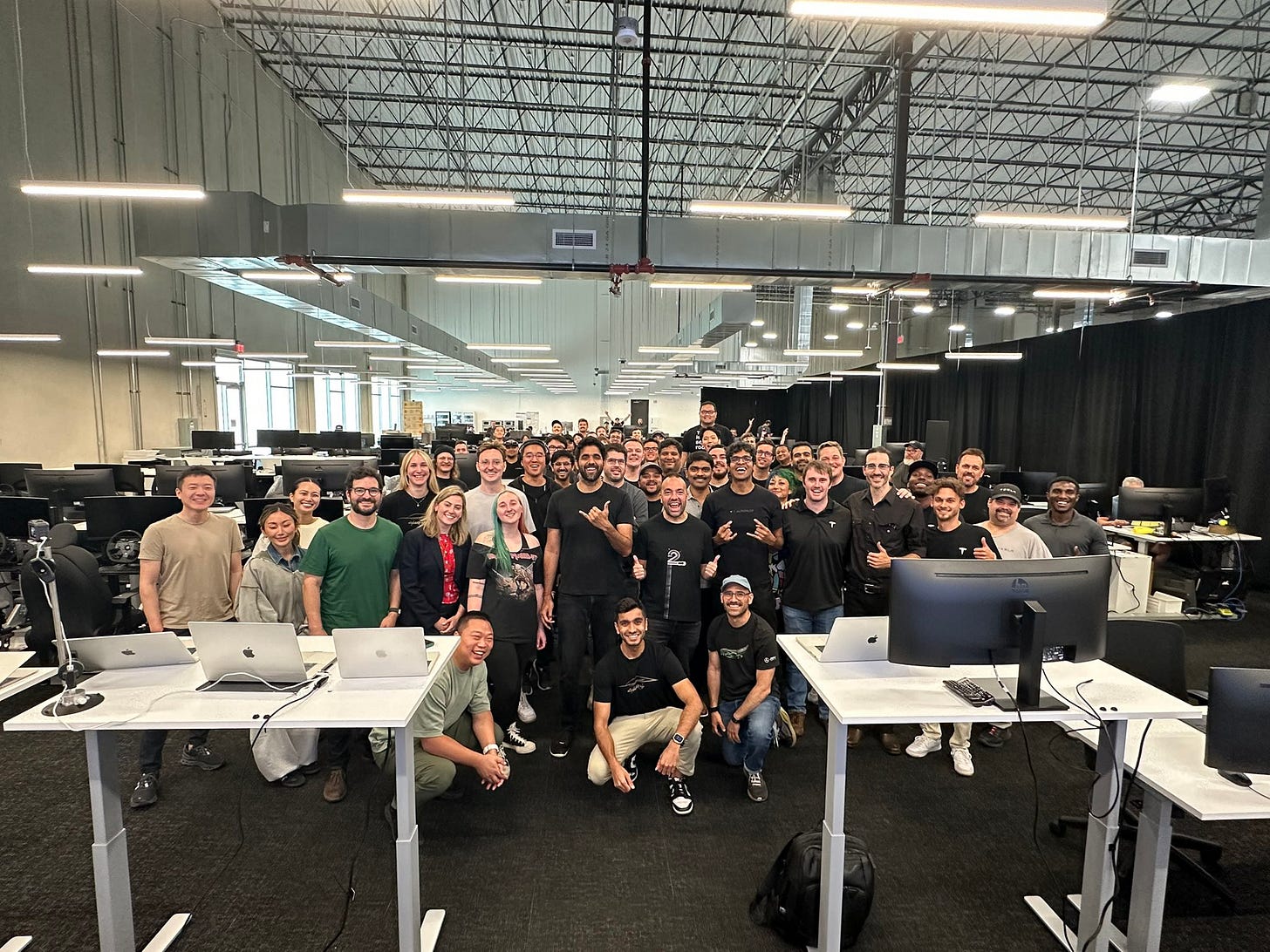Tesla launched their robotaxi service today in Austin. I watched a couple ride-along videos on social media, and so far it is about what I expected. If it is not a boring ride, it should not have been on the road in the first place. But we have a long, long way to go before we know much at all about safety based on what has been publicly revealed so far.

I've seen some argue that the person in the passenger seat means this is a failed launch, but I think that argument is misguided. While it seems that the chaperone (and the passenger) have a tiny stop-in-lane touchscreen button, that is hardly what I would call a test/safety driver interface. The role is not being a credible "safety driver" as we expect from someone behind the wheel.
I think it is smart of Tesla to put this person there to:
(1) act as an extra measure of defense-in-depth safety for unforeseen situations, while not a full-up safety driver,
(2) be there to deal with any post mishap responses, police stops, and other such situations that might occur, and
(3) jump into the driver seat if the car is stopped+stuck while blocking traffic or encroaching on an emergency response scene.
Waymo and Cruise would have avoided *so much* bad press in San Francisco if they had kept someone in the front passenger seat longer. (At the time I called it having an in-vehicle valet in this post from about two years ago: https://www.linkedin.com/posts/philip-koopman-0631a4116_driverless-cars-are-driving-san-francisco-activity-7082380492506849280-ZpHV )
The elephant in the room is the role of the teleoperating remote drivers. Almost certainly they have a remote steering wheel, letting FSD do its thing and intervening if needed. While marketed as FSD(unsupervised/test), a more accurate description is probably FSD(remote supervised). Nonetheless, this was how China robotaxi deployments started, so I think calling it a "robotaxi" is within reason. The biggest question for safety (and it is a huge question) is whether they have done proper safety engineering including accounting for human response limitations with time lags, connection drops, automation complacency, and limited situational awareness. The biggest question for scaling will be how that role is managed and reduced over time.
This is an important first step for Tesla on the road to robotaxis. But as other companies have learned, this is the end of the beginning, and there is a very long road ahead to scale up to a viable product. Even when the need for continuous supervision is reduced, there will still be numerous operational considerations that will involve human support staff, since taxi drivers do more than just drive.
Today, Tesla has taken an important step on a road that stretches many years ahead of them. Time will tell if they have done so with acceptable safety, and how much work it will take to go from a small pilot deployment to a scalable operation.
Here is an article to use as a staring point: https://techcrunch.com/2025/06/22/tesla-launches-robotaxi-rides-in-austin-with-big-promises-and-unanswered-questions/
If you want to see ride-along videos you can have a look at the service formally known as Twitter where I expect they’ll be popping up this evening and into next week.
P.S. Told You So.
From after I wrote the above … here's a photo showing steering wheels in the Tesla remote control center from a source that passes a quick credibility sniff test. Would be interesting to have that photo more rigorously authenticated.
Source https://x.com/OwenSparks_/status/1936890394538643706
via bladerskb on r/SelfDrivingCars
Upon closer inspection, the steering wheel closeup seems to be a crop of a big crowd picture which is being widely circulated on social media (same dude with the tan t-shirt in both, in the same position partially occluding the steering wheel).




And ... there's a photo showing steering wheels in the Tesla remote control center from a source that passes a quick credibility sniff test. Would be interesting to have that photo more rigorously authenticated.
Source https://x.com/OwenSparks_/status/1936890394538643706
via bladerskb on r/SelfDrivingCars
(Lots of fan comments that "Waymo does the same" -- which is far from true. No steering wheels for Waymo.)
NHTSA is looking into reports of misbehaving Tesla robotaxis. Hmmm, well, this did not take long. "Federal safety regulators have reached out to Tesla a day after the automaker began providing rides in its branded robotaxis in Austin." “NHTSA is aware of the referenced incidents and is in contact with the manufacturer to gather additional information,” "Videos posted online show the Tesla robotaxis driving over the speed limit and in one case, swerving into the wrong lane."
https://www.msn.com/en-us/autos/news/tesla-s-robotaxis-have-already-caught-the-attention-of-federal-safety-regulators/ar-AA1HhDR5
We have previously seen NHTSA investigations and recalls related to dangerous behavior by other robotaxi companies.
If Tesla's teleoperated drivers aren't accurately intervening to prevent unsafe driving behaviors, then the deployment lacks acceptable safety. Whether the cause is an FSD software problem, a teleoperation technology problem, or human ability limitations to effectively remote supervise FSD doesn't really matter in terms of whether or not it is acceptably safe.